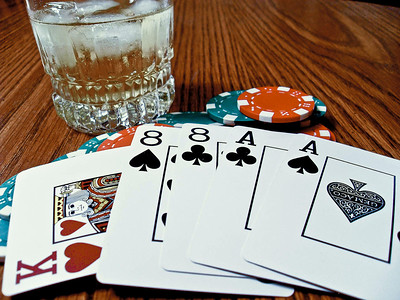The Dead Man’s Hand: A Historical Enigma and Strategic Curiosity


For generations, the world of poker has seduced minds with its rich blend of luck, skill, and strategy. Beyond the turn of the cards and the placement of bets, the game carries an enigmatic air, surrounded with tales, myths, and superstitions that add layers of complexity and fascination. One narrative, standing above others in its macabre allure, is that of the Dead Man’s Hand—a set of cards intertwined with a celebrated life and a fateful death. This article seeks to satiate the curiosity of card game enthusiasts intrigued by the ominous tale surrounding this legendary hand.
Origin and Historical Context
The term ‘Dead Man’s Hand’ refers specifically to a poker hand consisting of a unique two-pair: aces and eights. Rooted deep in the annals of poker folklore, the Dead Man’s Hand is said to have been the last hand held by Wild Bill Hickok—a figure whose life is nothing short of legendary.
James Butler Hickok, also known as Wild Bill, was a multi-faceted personality, leaving an indelible mark on the history of the American frontier. His accomplishments were not limited to his skills in poker; he was also a lawman, soldier, scout, and showman among other things. Wild Bill was engaged in a poker game in a Deadwood saloon in South Dakota when he was abruptly killed by a gunshot from Jack McCall. While the reason for McCall’s vengeful act remains shrouded in mystery, it is widely speculated to be rooted in some quarrel related to gambling.
When Hickok fell, it is said that the Dead Man’s Hand was still in his possession, the cards reportedly remaining untouched on the table as a grim memento of his sudden demise. Over the years, this hand has not only permeated the lexicon of poker but has also accrued symbolic weight, often being equated with bad fortune or an unsettling atmosphere. Its mythic reputation has compelled many players to view it as an inauspicious set of cards to be scrupulously avoided.
Tactical Significance and Conversational Currency
Despite its ostensibly lugubrious aura, the Dead Man’s Hand remains a functionally valid hand in poker, fully capable of clinching a pot. Its historical association with Wild Bill Hickok’s dramatic exit has rendered it a locus of fascination and debate among both casual players and poker scholars. Whether discussed in low-key gatherings or analyzed on platforms dedicated to America’s online casinos, the hand’s veritable utility cannot be entirely discounted.
The applicability of the Dead Man’s Hand is contingent upon the situational specifics of the poker game at hand. For instance, in a Texas Hold’Em game, the usefulness of this card combination pivots on the sequence of play. Early appearance affords players the latitude to augment its utility. In Omaha, however, the prospects are bleak; two pairs are rarely enough to secure victory. In Five Card Stud, if these two pairs are openly displayed, they can act as a psychological deterrent, discouraging other players from increasing the pot during the fifth card.
Influence and Popular Culture
The tale of the Dead Man’s Hand and its association with Wild Bill Hickok has been a fodder for American popular culture, recounted through various mediums—books, films, and television series alike. Its riveting influence has served to enshrine poker’s cultural relevance, prompting deliberation over whether the card combination genuinely harbors the potential to bestow bad luck.
Final Thoughts
The Dead Man’s Hand serves as a singular archetypal legend among the multiplicity of stories that populate poker’s extensive history. It encapsulates the enigmatic spirit and complex psychology that make the game an enduring magnet for devotees across skill levels. So the next time you venture into a game, remember the tale of Wild Bill and his fateful last hand. While it may not provide tactical insights, its colorful history could offer you a fascinating conversational gambit, and perhaps even guide you toward a serendipitous win.


















